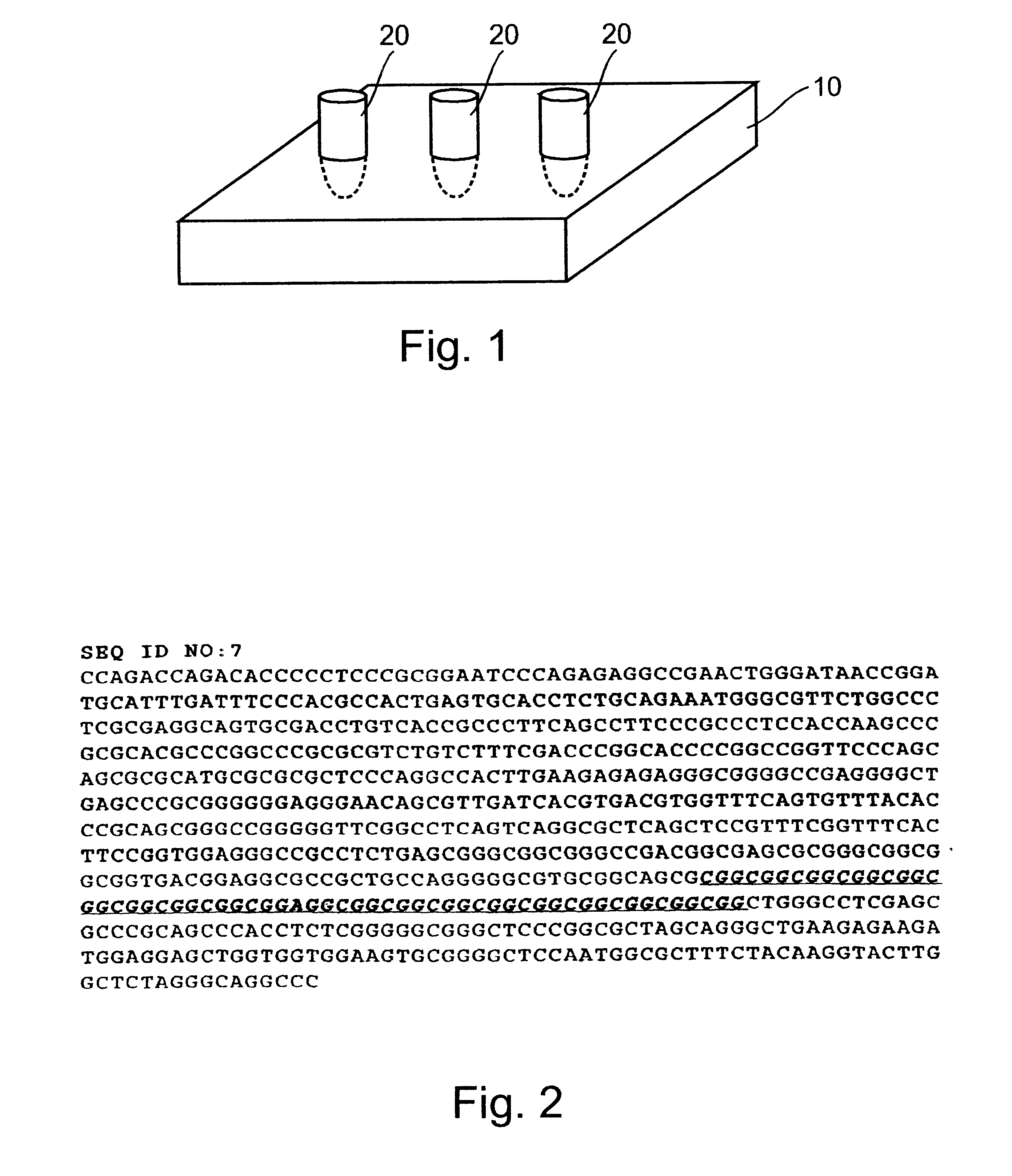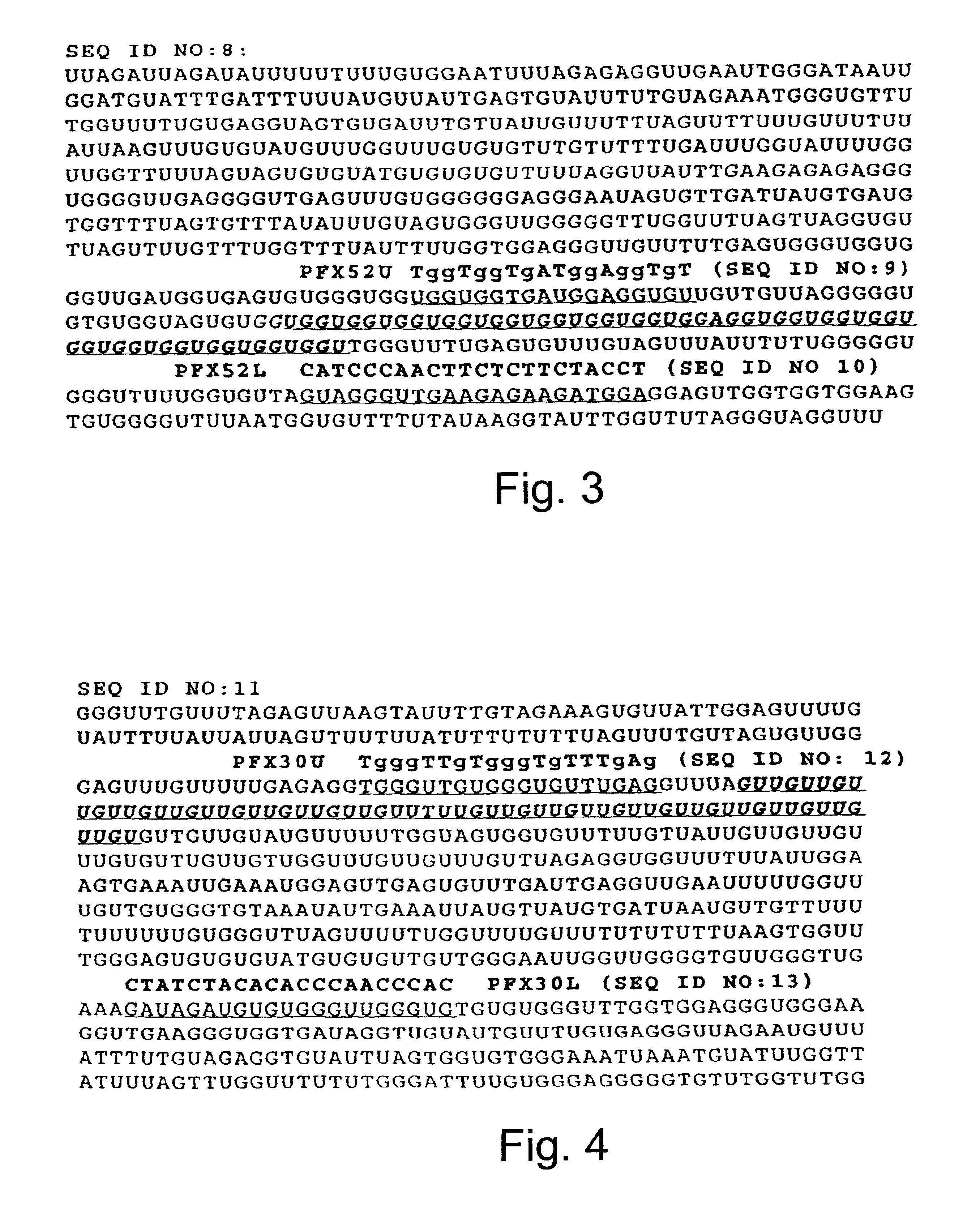Methods and kits for characterizing GC-rich nucleic acid sequences
a nucleic acid sequence and kit technology, applied in the field of methods and kits for characterizing gc-rich nucleic acid sequences, can solve the problems of slow accumulation of disease features, difficult diagnosis of syndrome, failure to replica
- Summary
- Abstract
- Description
- Claims
- Application Information
AI Technical Summary
Problems solved by technology
Method used
Image
Examples
example 1
Protocol for Sodium Bisulfite (SB) Treatment of DNA
The following provides a presently preferred protocol treatment for human genomic DNA.
Incubate 20 .mu.g of human genomic DNA in 50 .mu.l of 0.3 M NaOH for 15 minutes at 37.degree. C. Bring volume up to 450 .mu.l with 3.6 M SB (final concentration 3.1 M), then add 25 mM hydroquinone (final concentration of 2.5 mM); mix and incubate at 55.degree. C. for 16 hours under oil.
Purify DNA from the treatment solution (using for example the Gene Clean II kit, Bio 101). Resuspend the pellet in 30 g.mu.H.sub.2 O. Add 3 M NaOH to a final concentration of 0.3 M. Incubate for 15 minutes at 37.degree. C. Precipitate DNA using NaOAc and EtOH. Resuspend in 15 .mu.l H.sub.2 O.
example 2
Protocol for PCR Amplification of SB Treated DNA
The following provides an amplification protocol for SB treated DNA.
Cycle at 94.degree. C., 30 sec., 62.degree. C., 30 sec., 72.degree. C., 60 sec. Employ 35 cycles followed by 5 minutes at 72.degree. C.
example 3
Amplification of Fragile XA Alleles
Using the above procedure and primers PFX30U (SEQ ID NO:12) and PFX30L (SEQ ID NO:13, see Example 4 below), a 406 bp fragment was amplified from a normal human female DNA sample (29 repeats); a pre mutation DNA sample gave a 440 bp fragment and a control, non-SB treated DNA did not amplify. To prove that the amplified fragments are derived from the expected FMRI region, they were cut with the restriction enzyme SspI and the expected fragments were visualized using agarose gel electrophoresis.
PUM
| Property | Measurement | Unit |
|---|---|---|
| Size | aaaaa | aaaaa |
Abstract
Description
Claims
Application Information
 Login to View More
Login to View More - R&D
- Intellectual Property
- Life Sciences
- Materials
- Tech Scout
- Unparalleled Data Quality
- Higher Quality Content
- 60% Fewer Hallucinations
Browse by: Latest US Patents, China's latest patents, Technical Efficacy Thesaurus, Application Domain, Technology Topic, Popular Technical Reports.
© 2025 PatSnap. All rights reserved.Legal|Privacy policy|Modern Slavery Act Transparency Statement|Sitemap|About US| Contact US: help@patsnap.com


